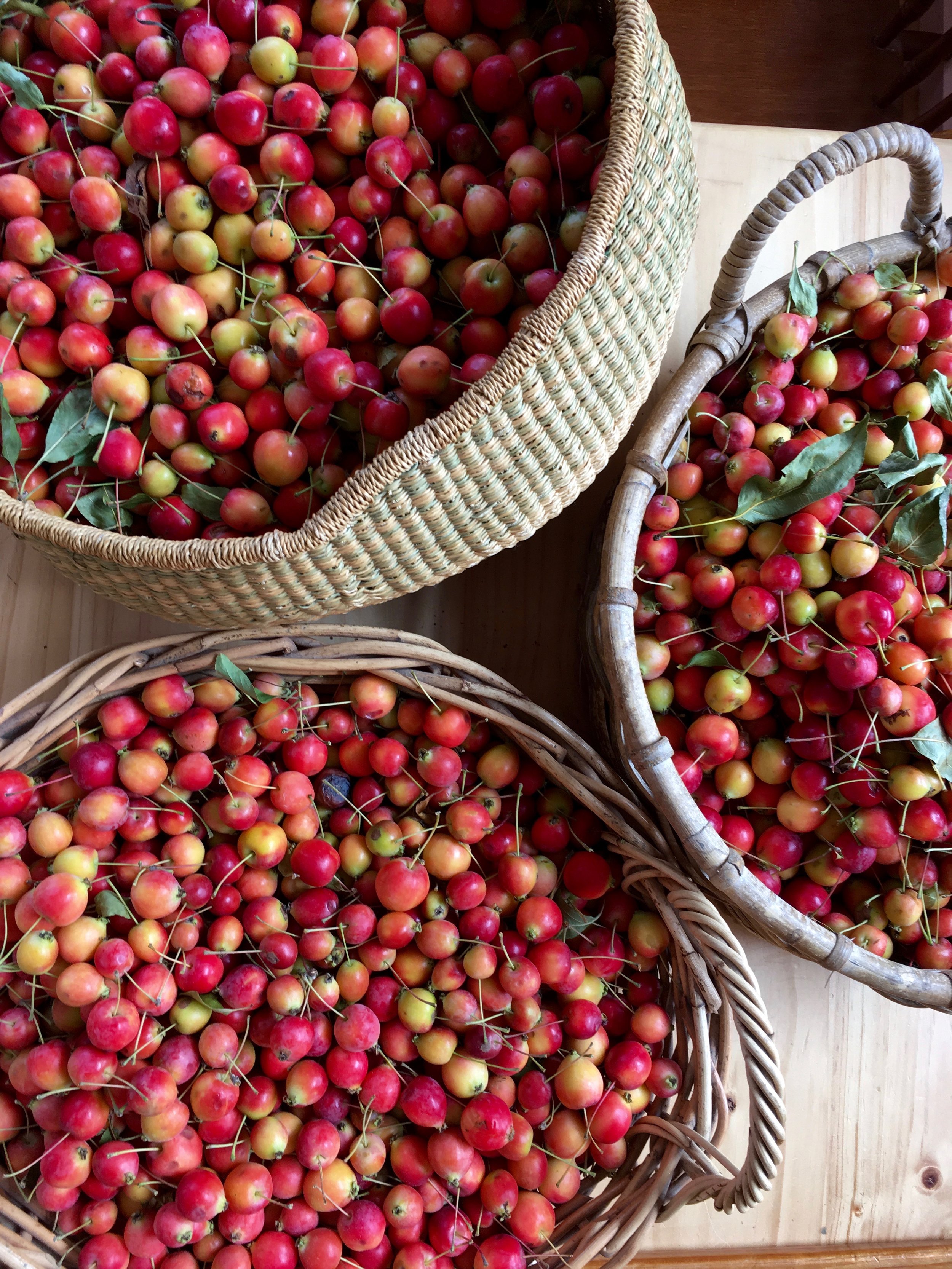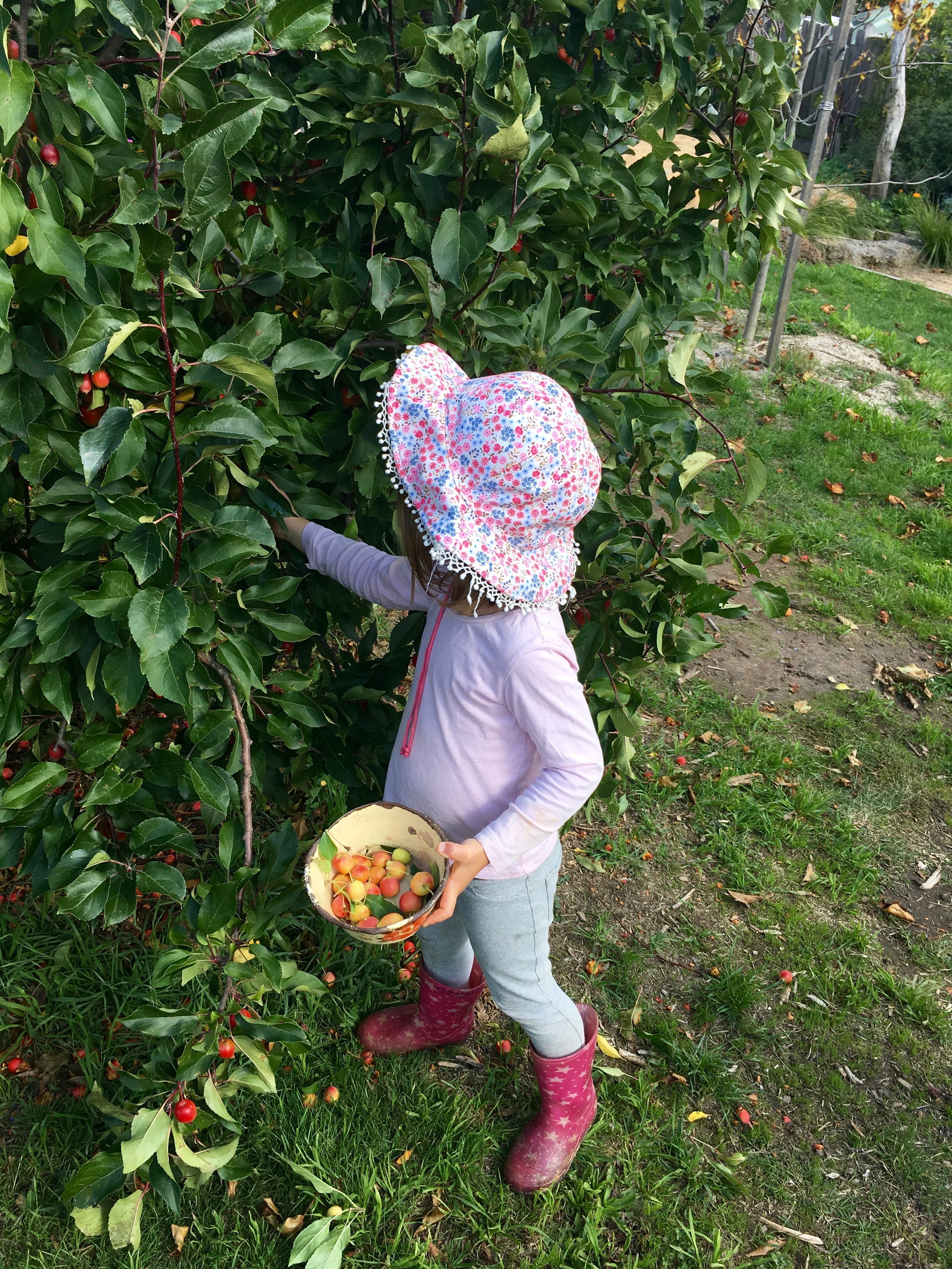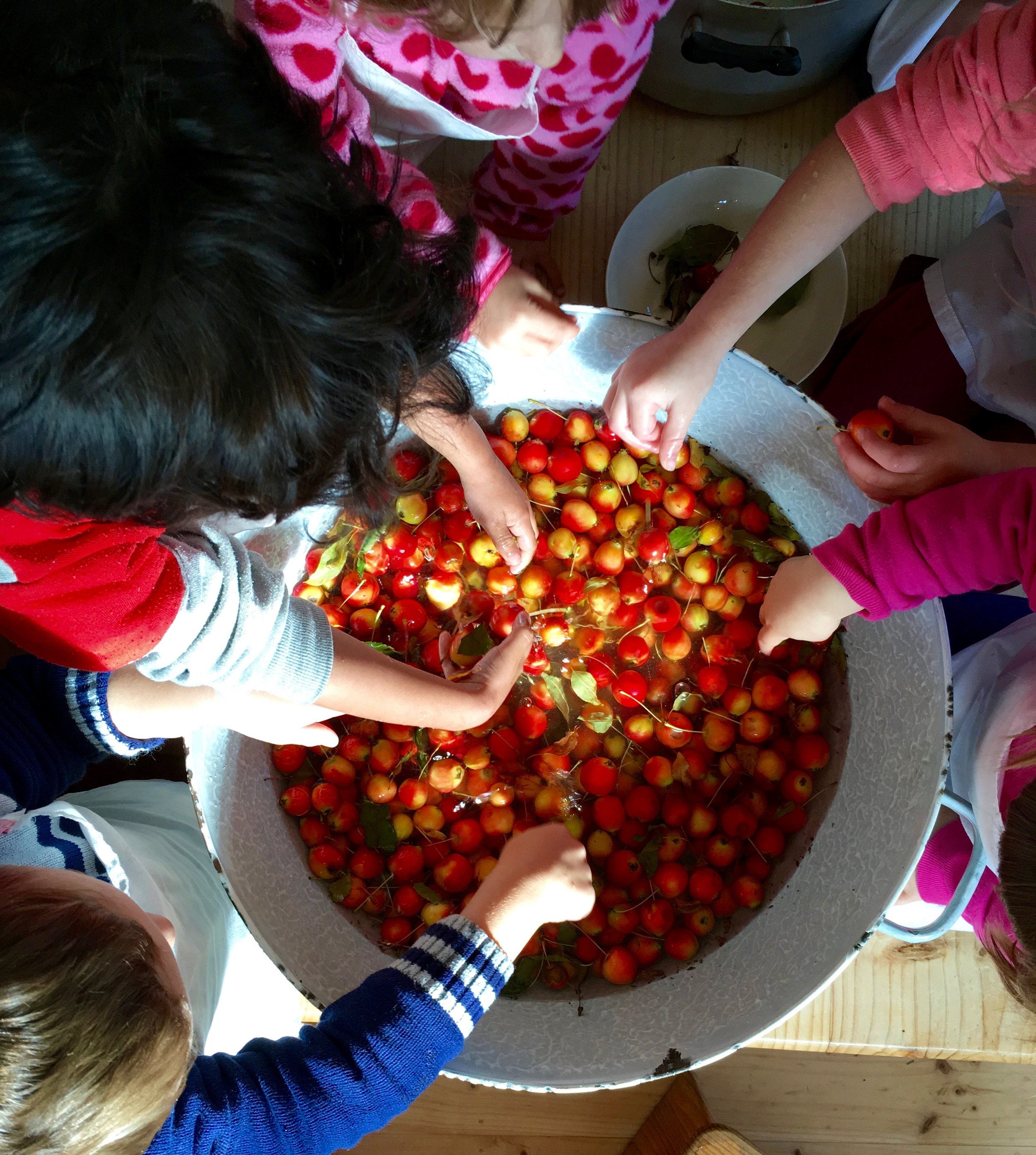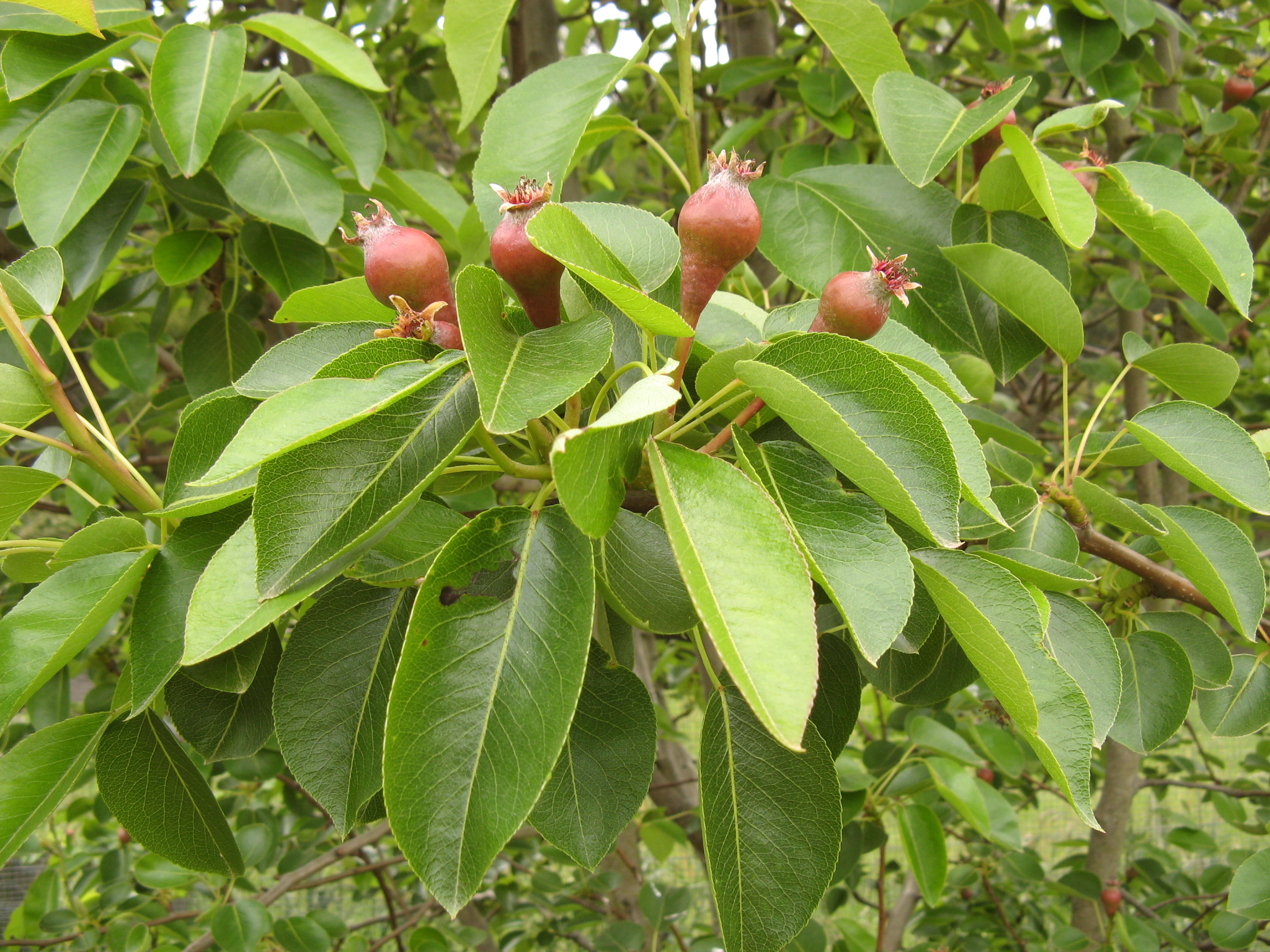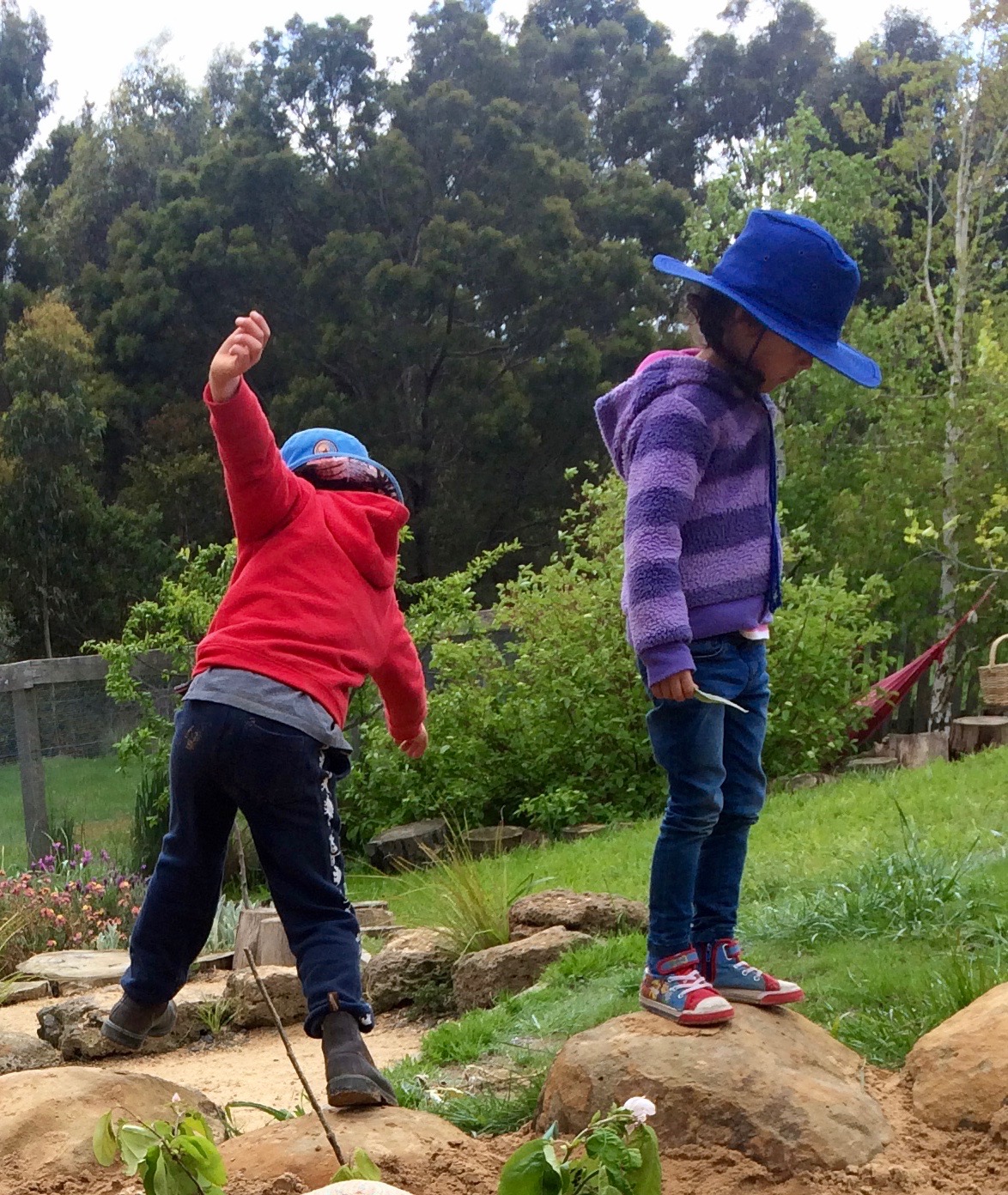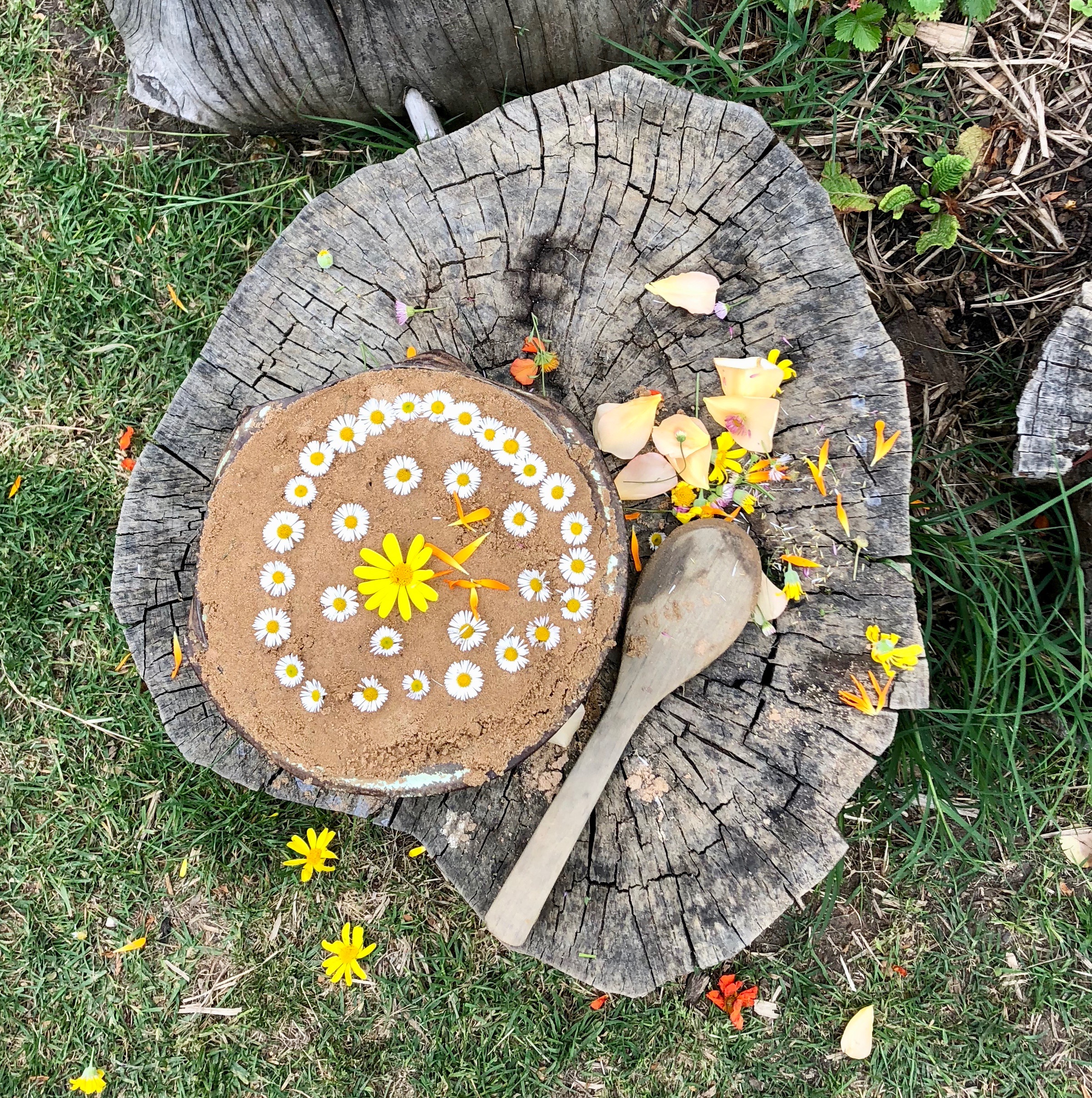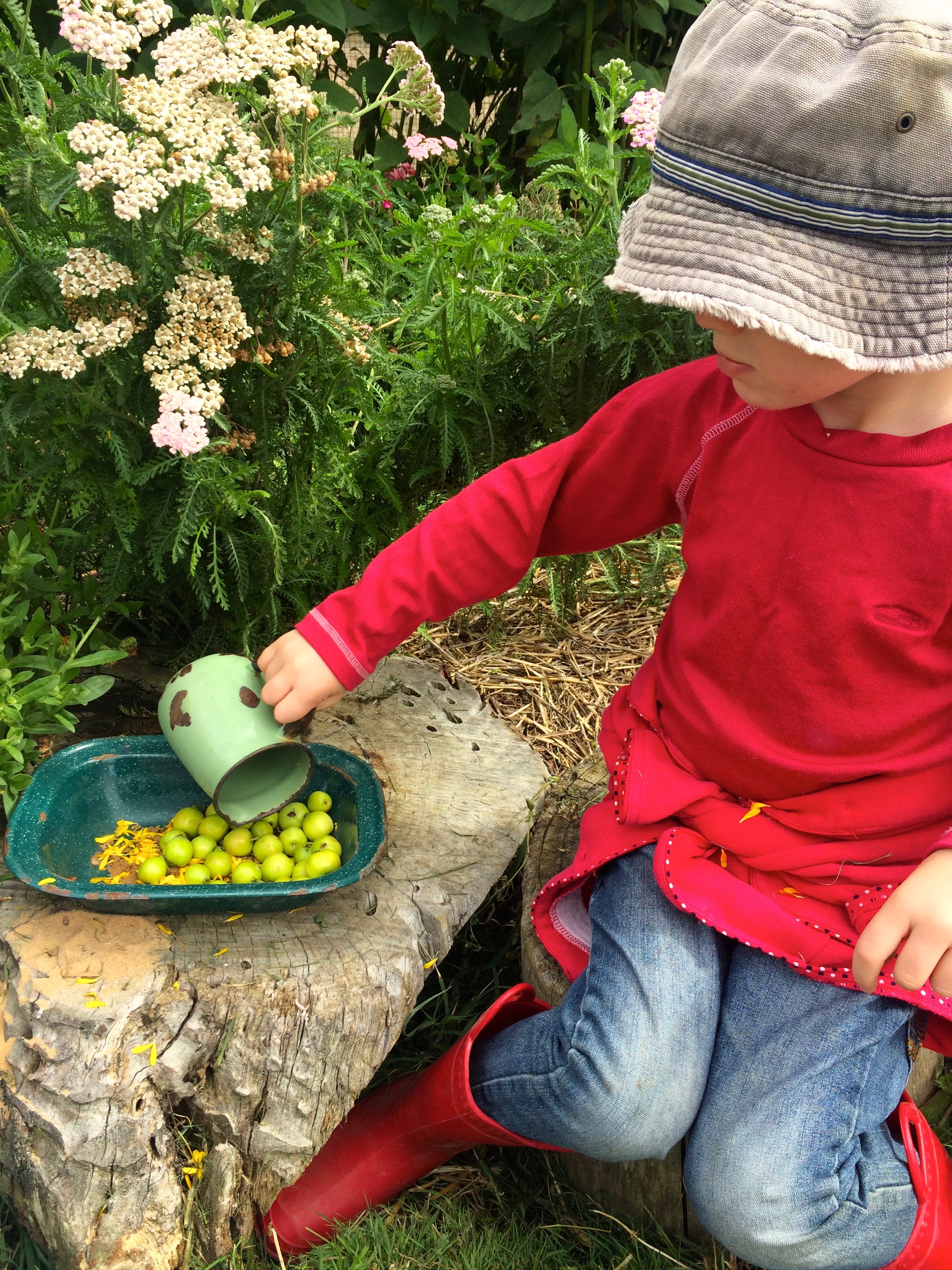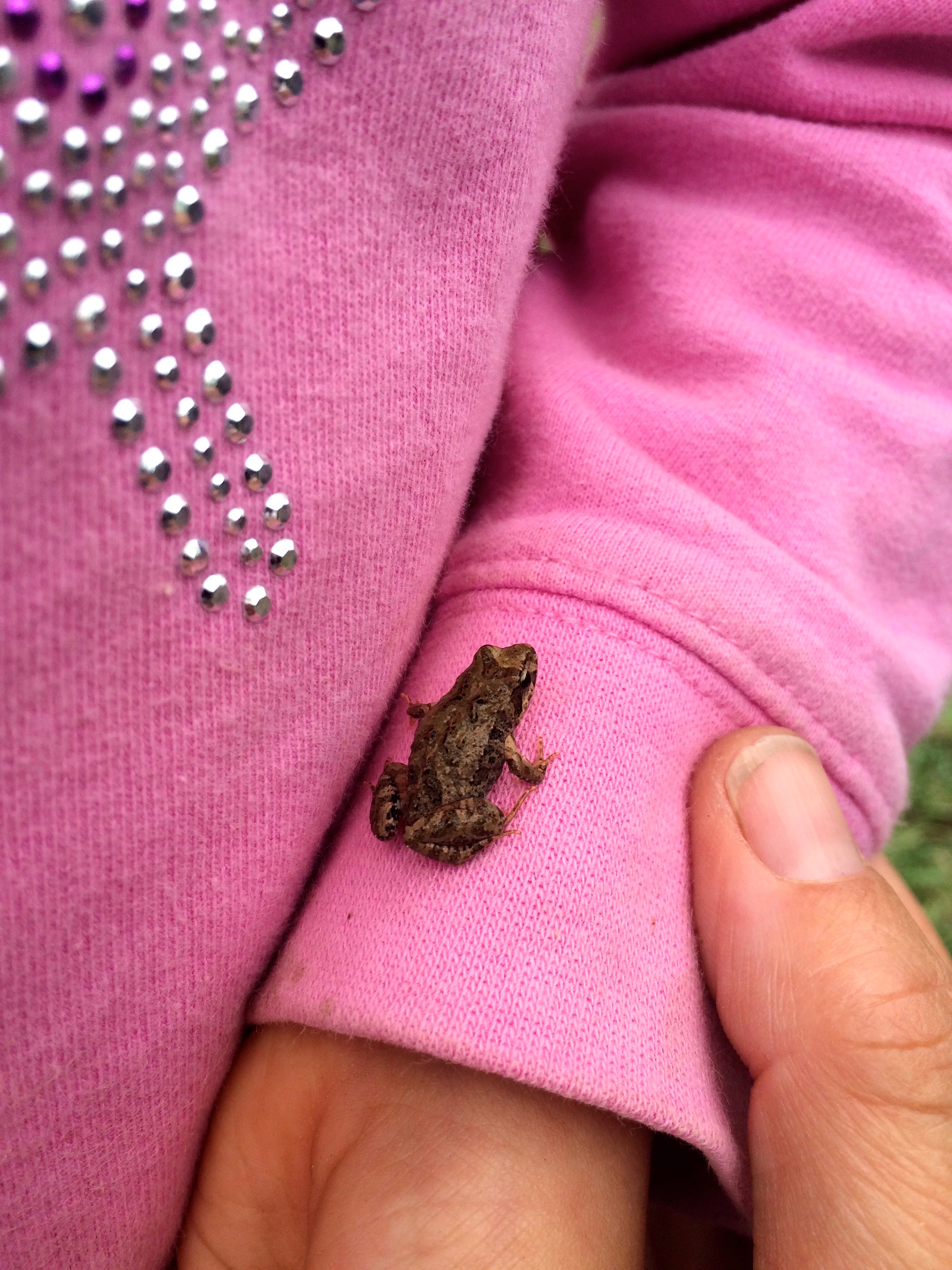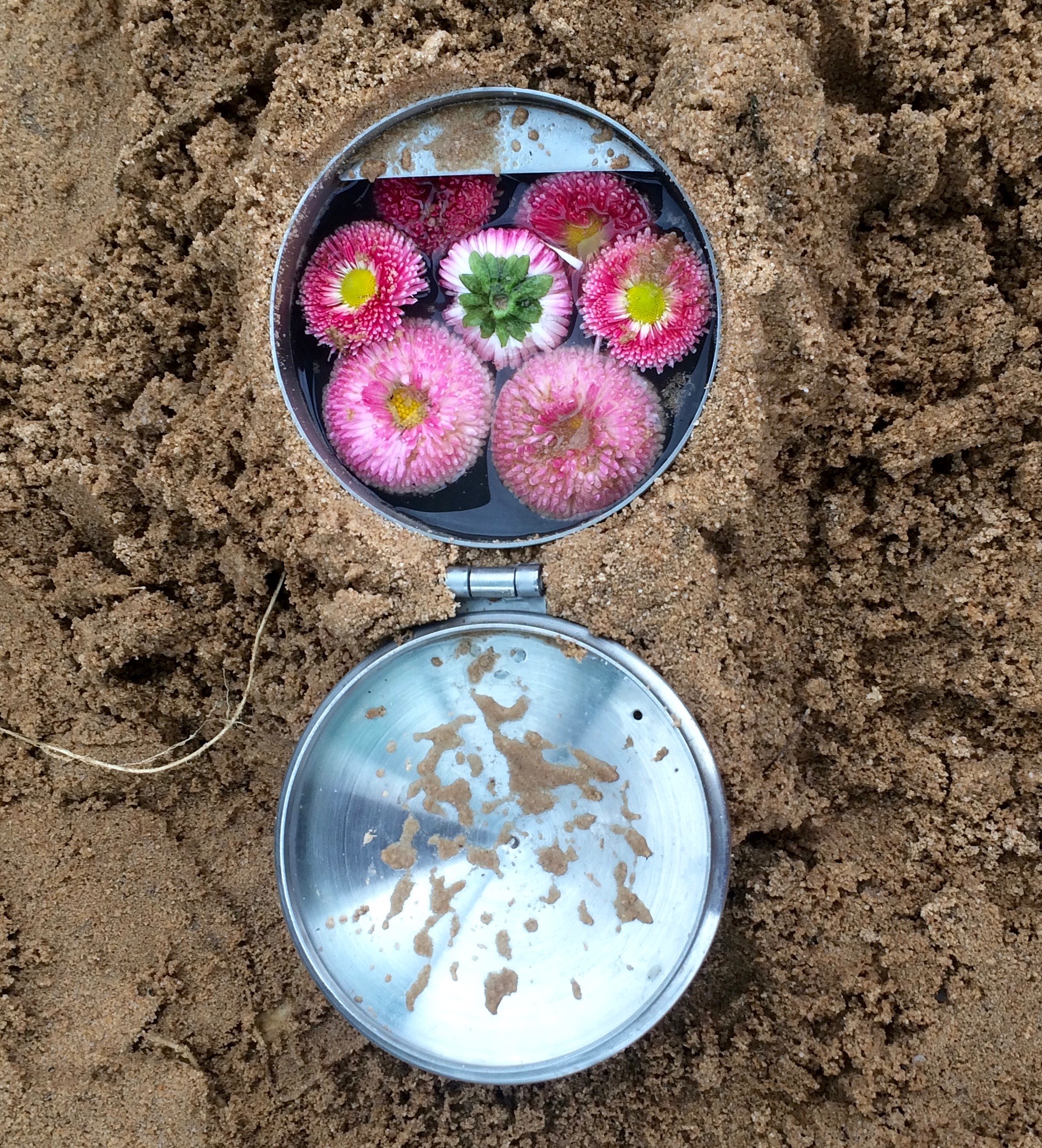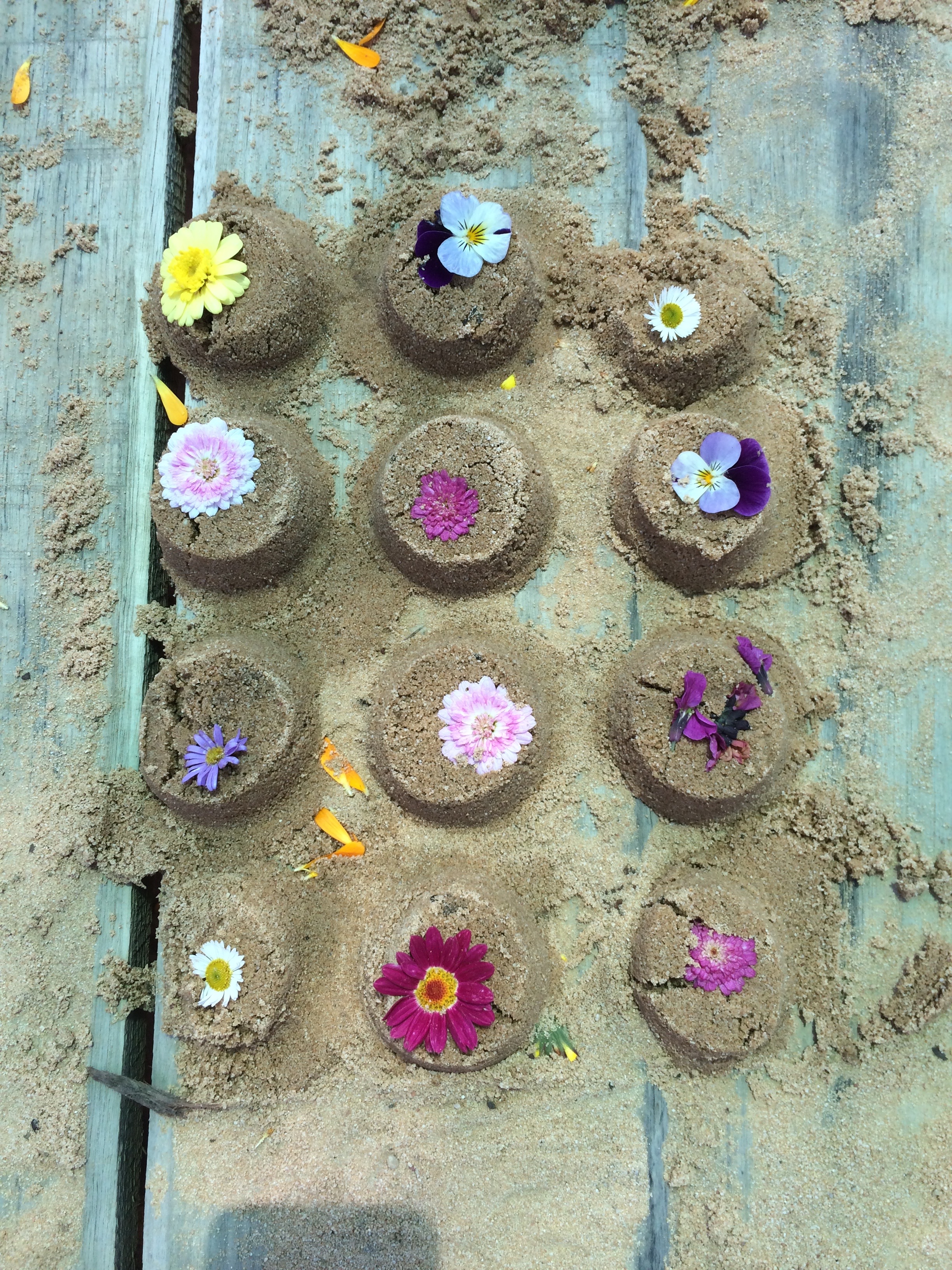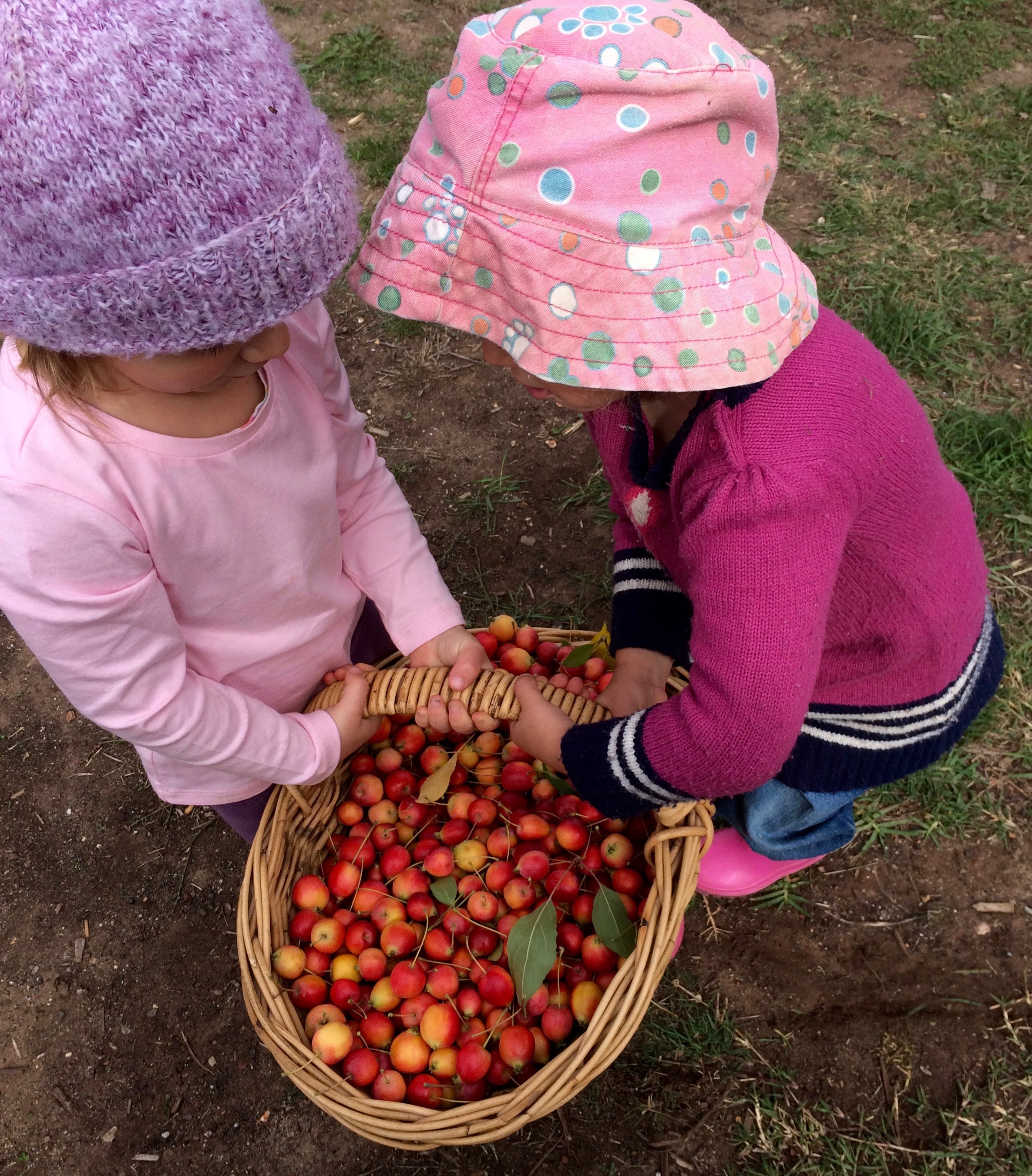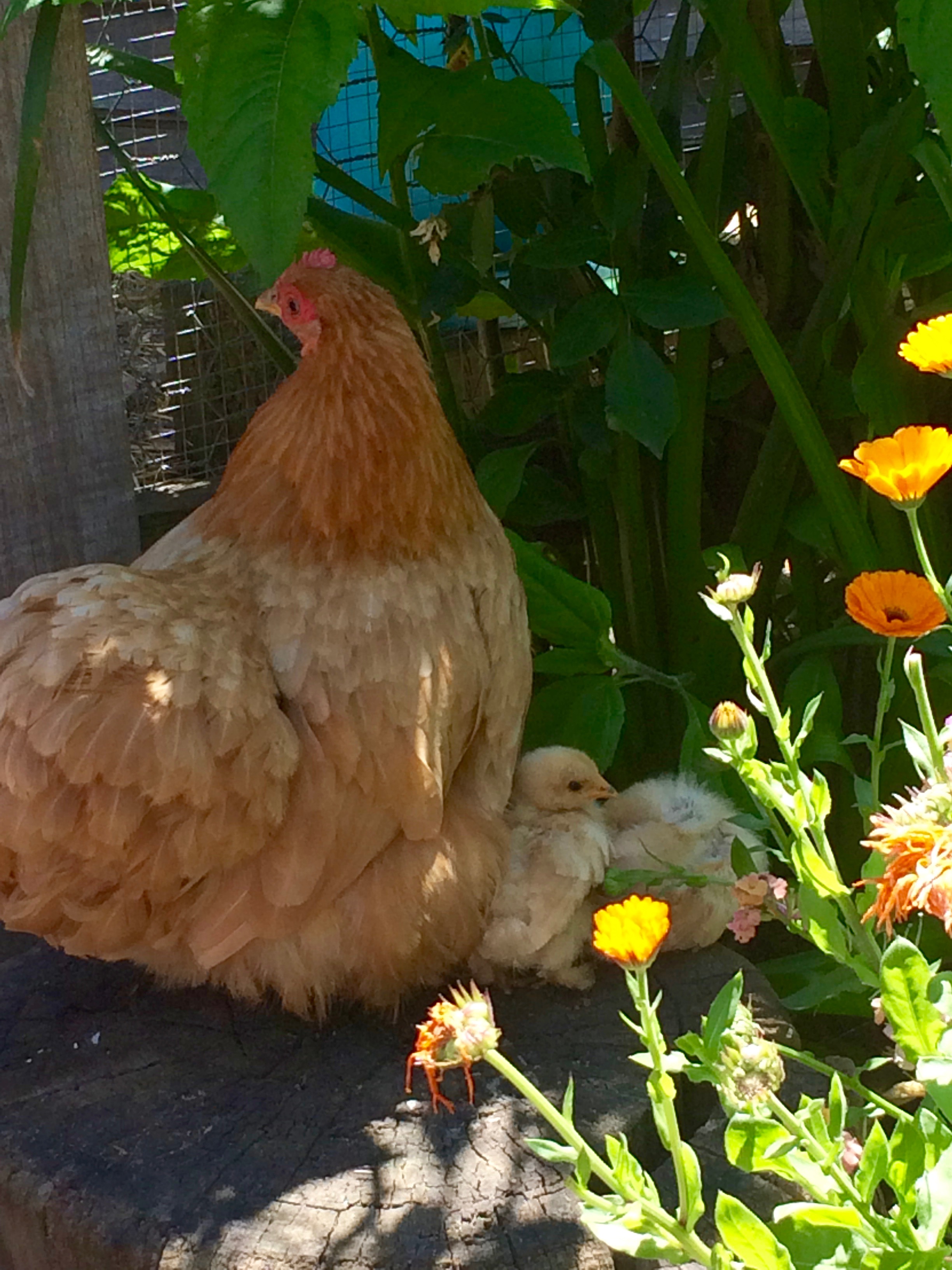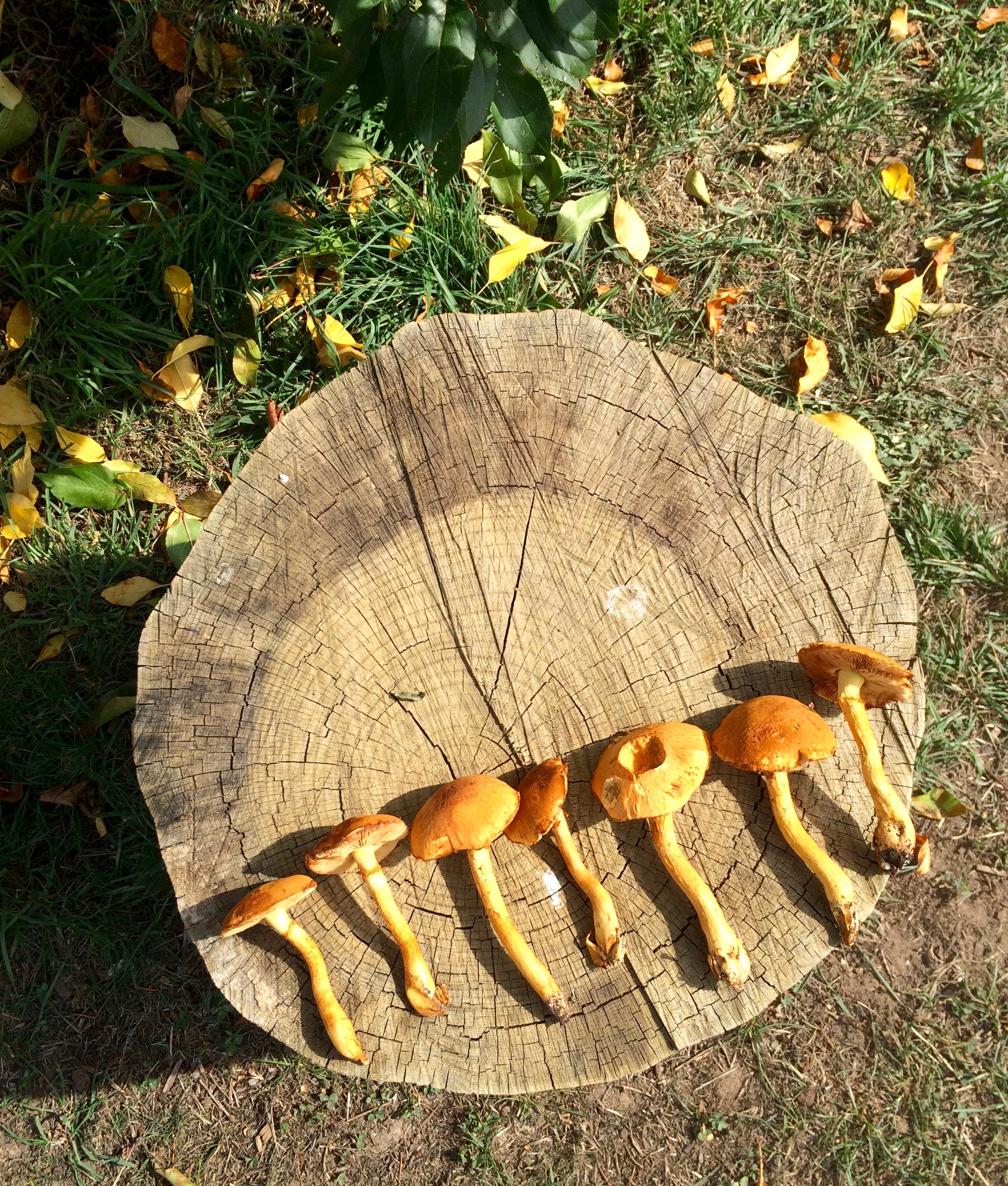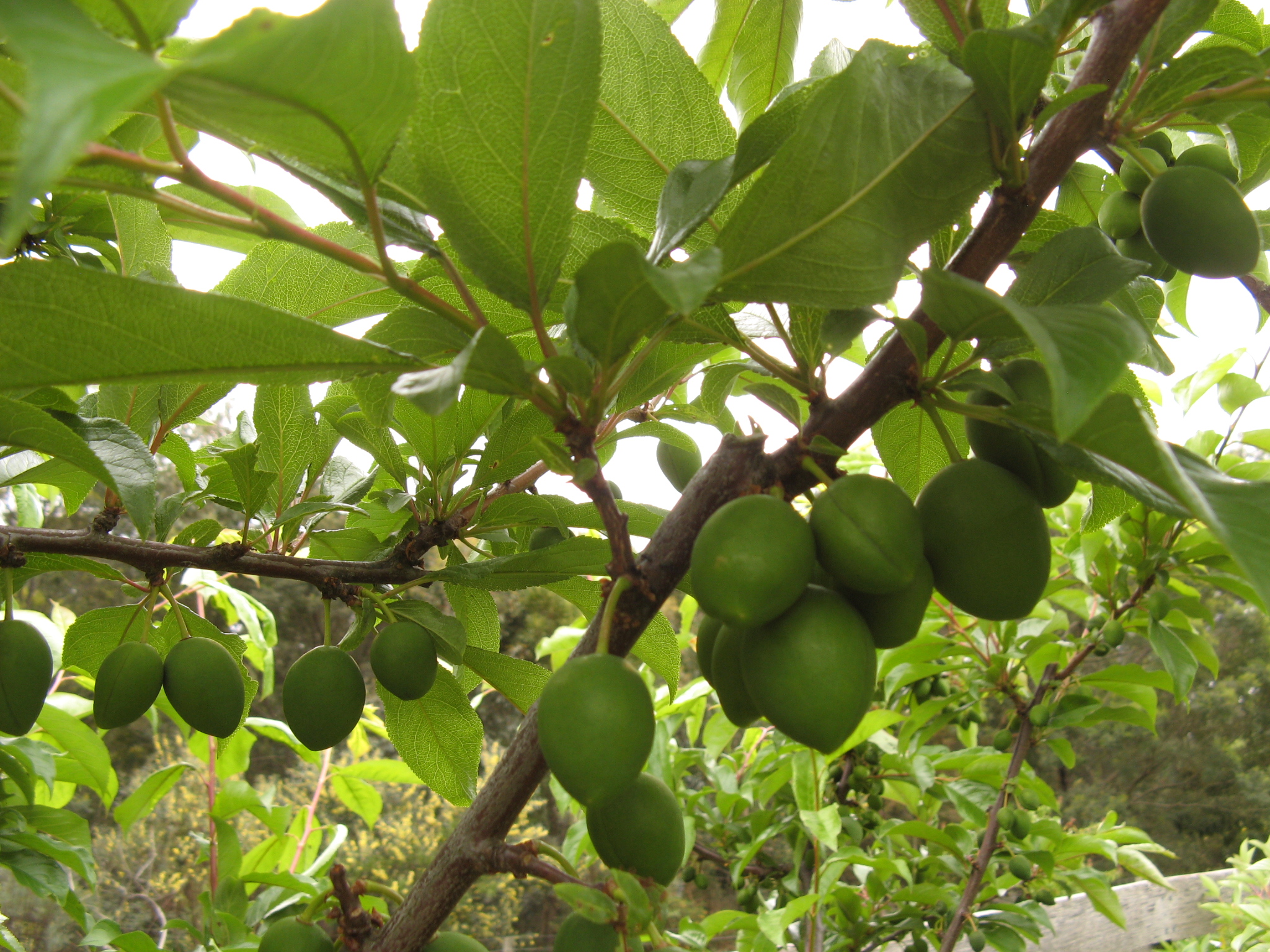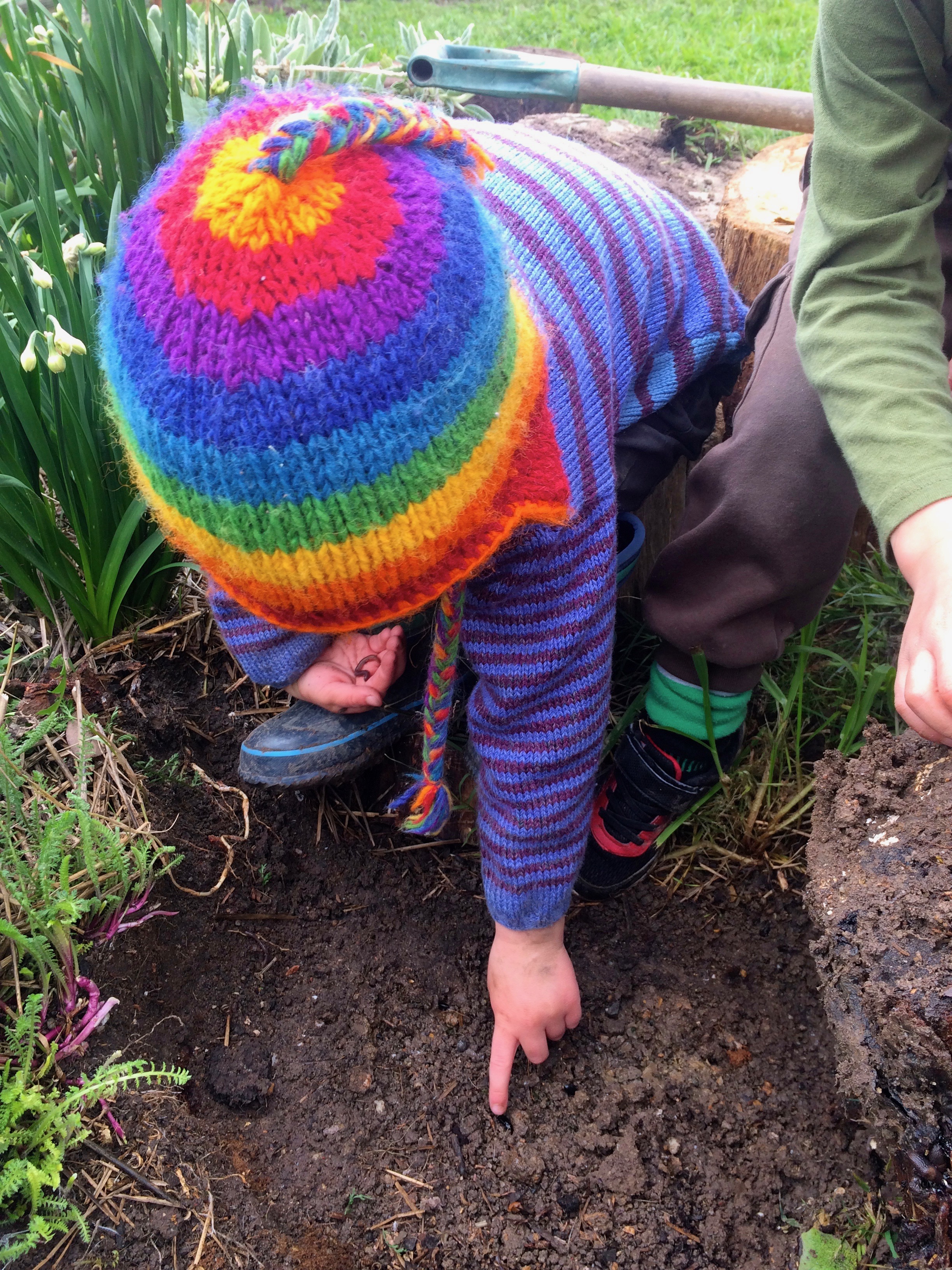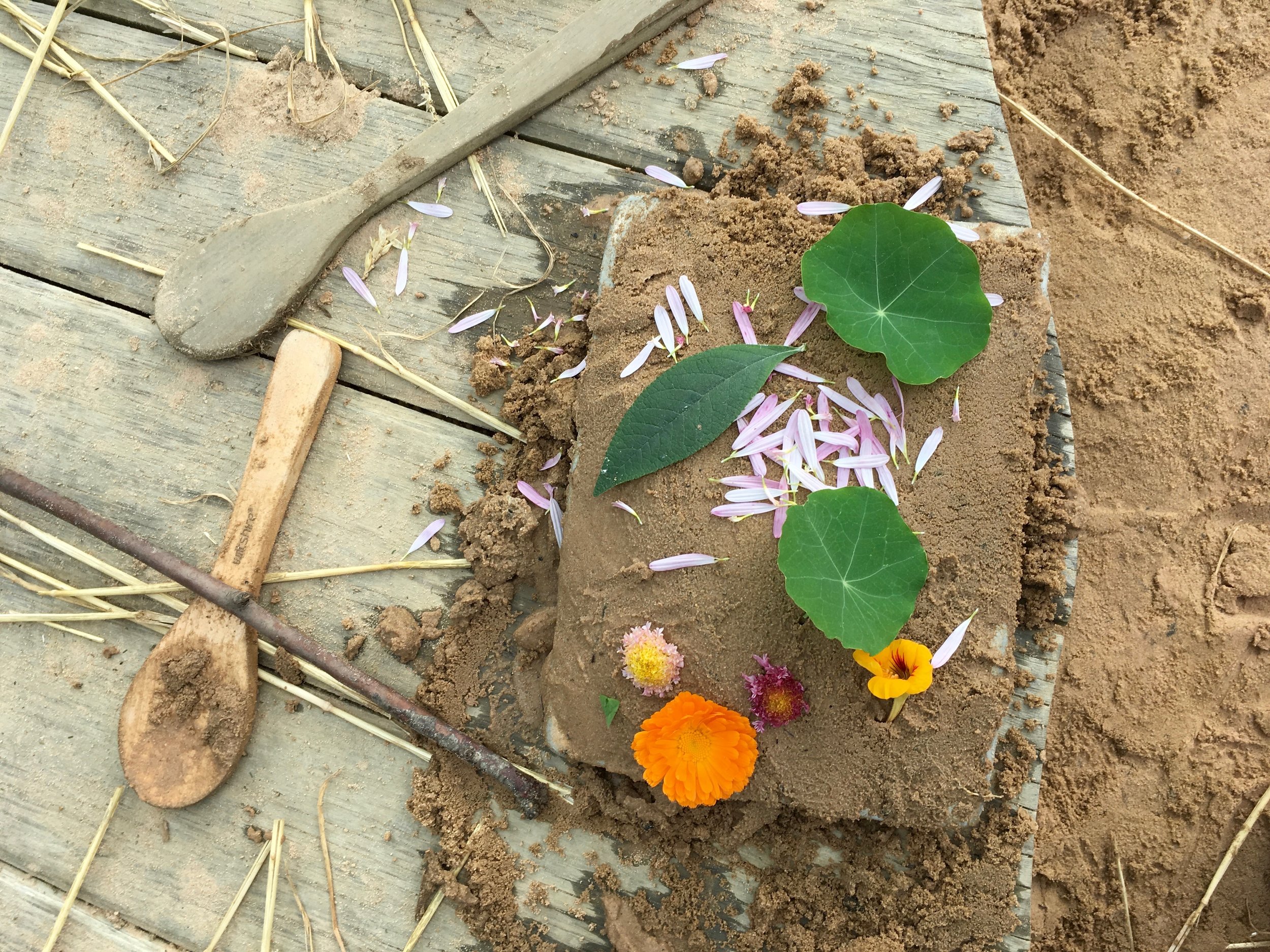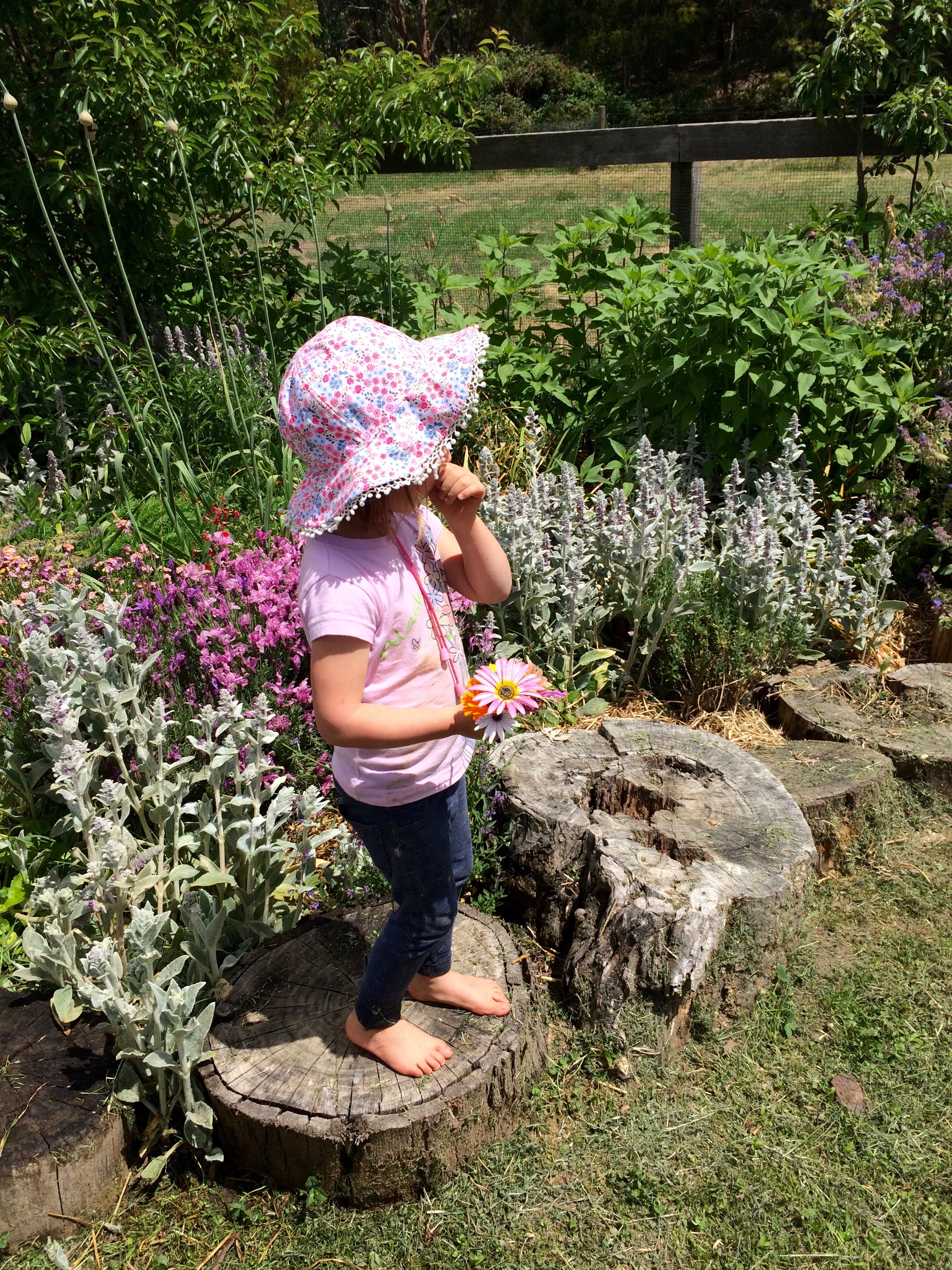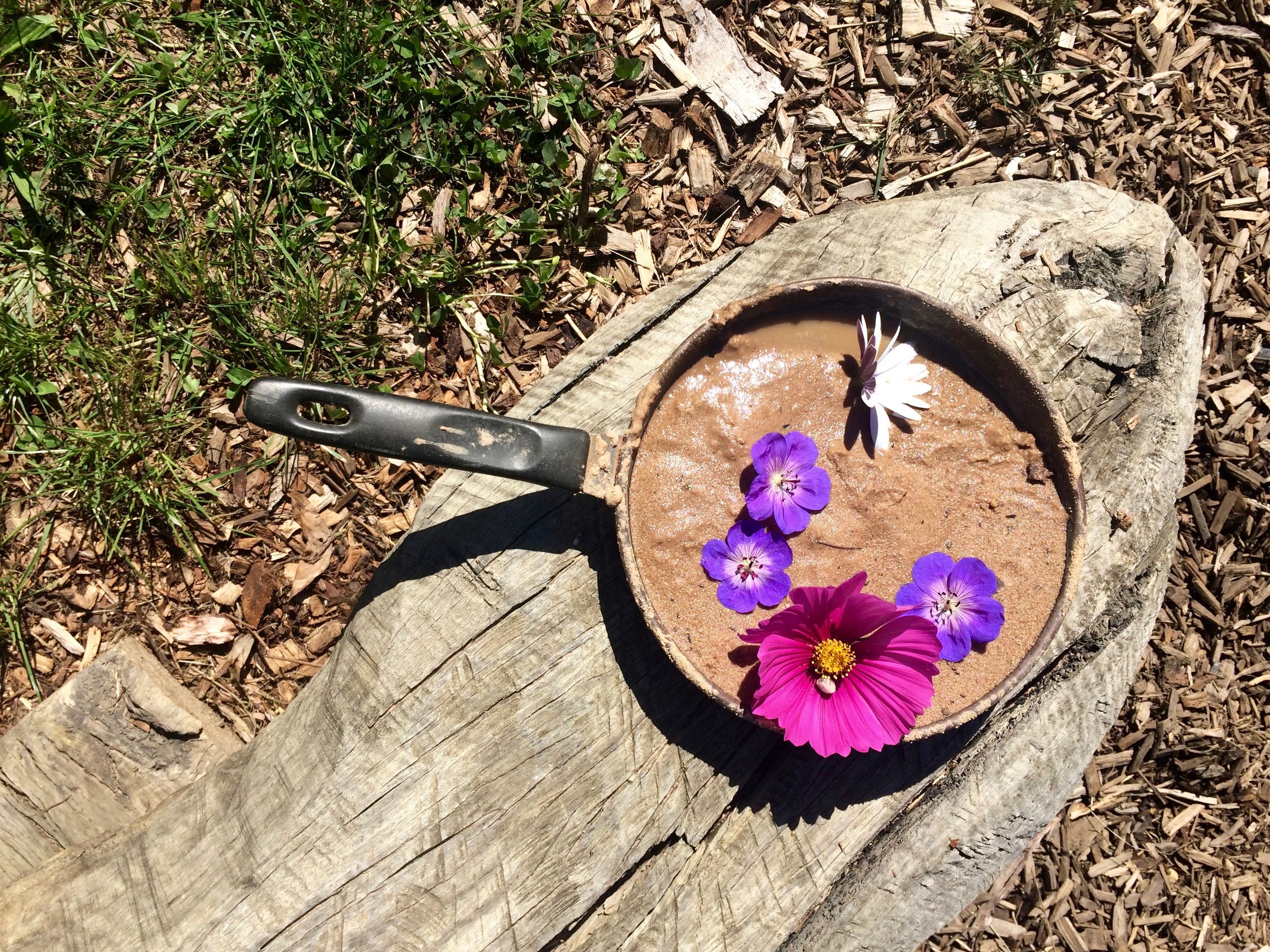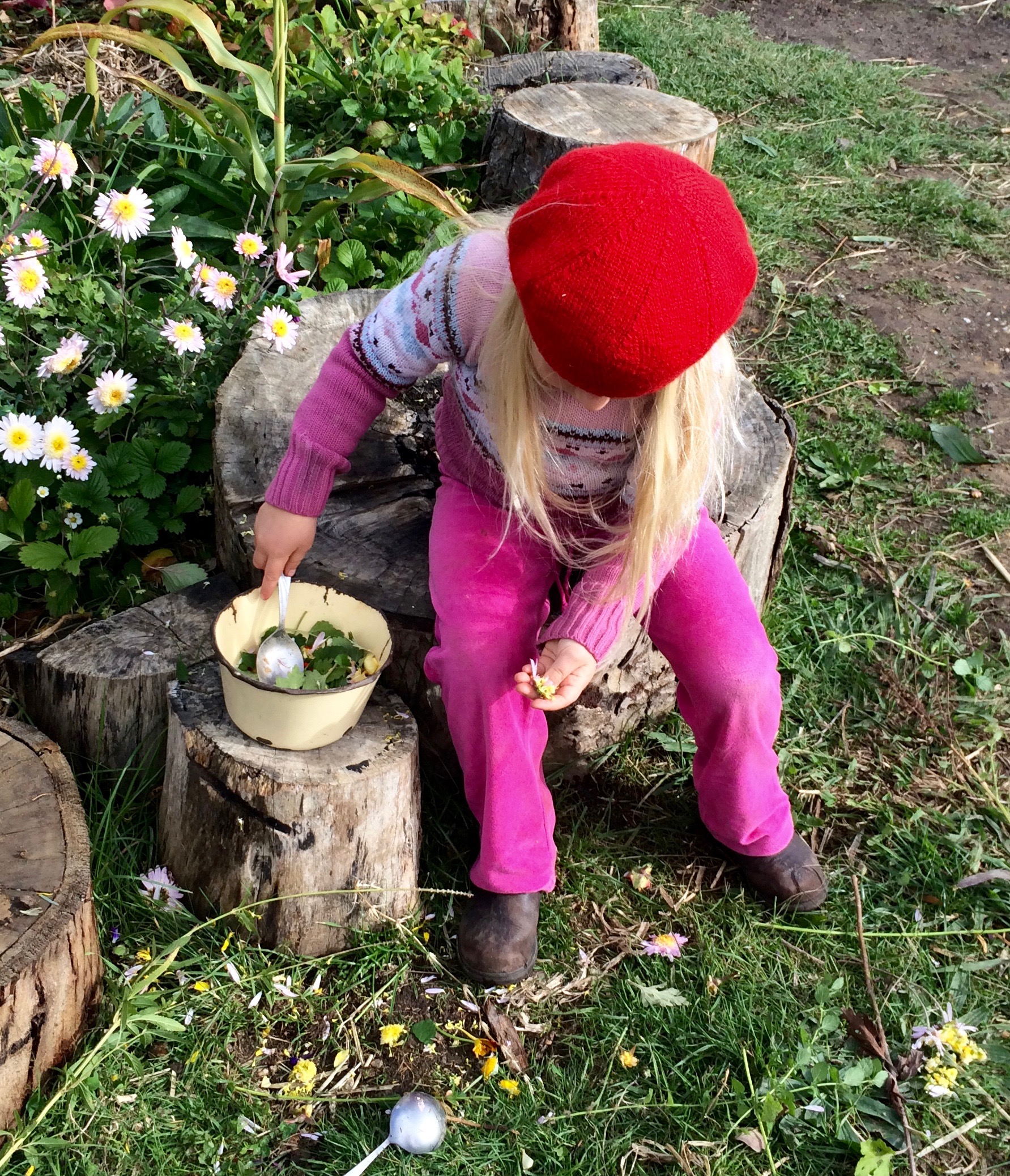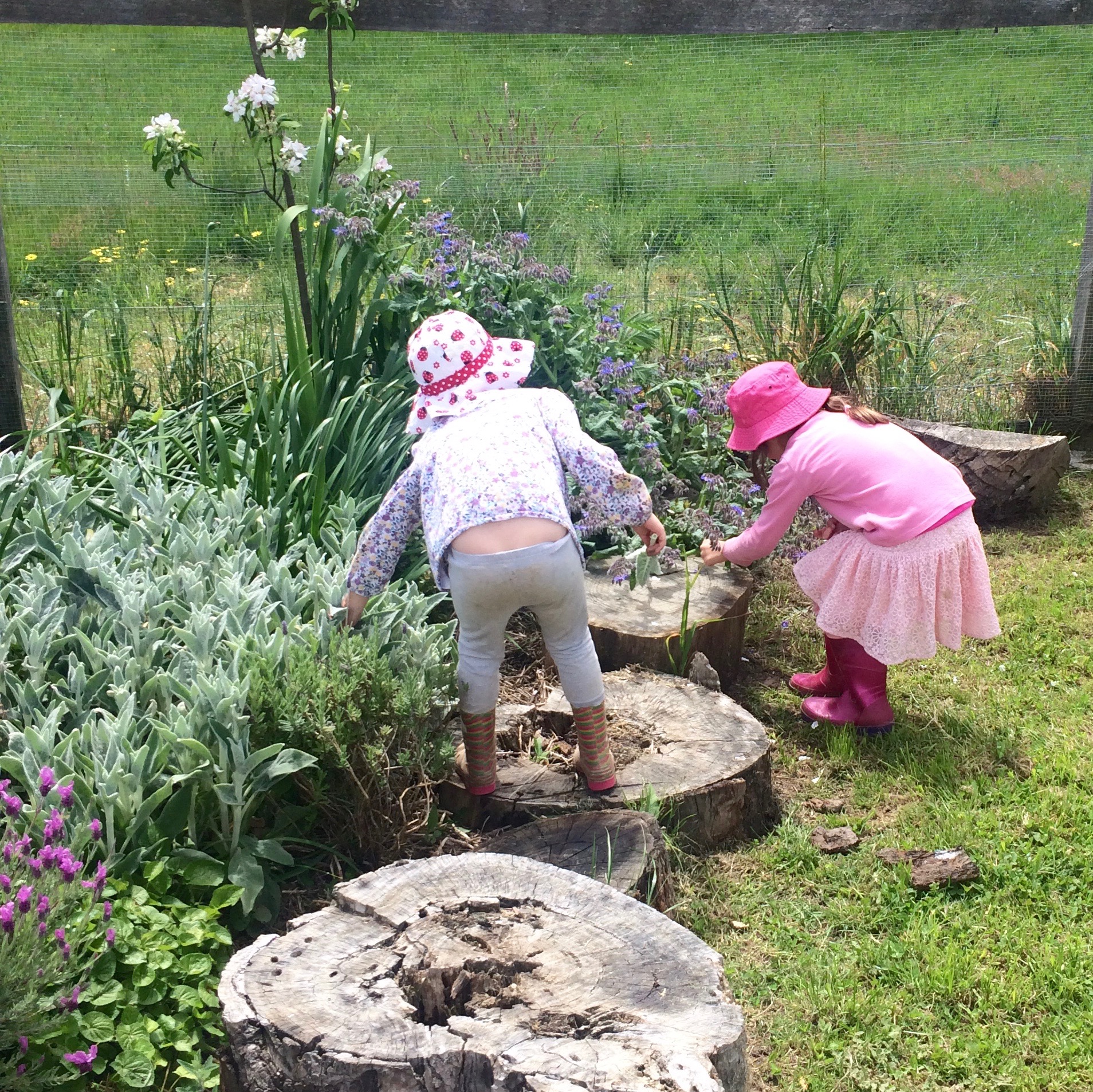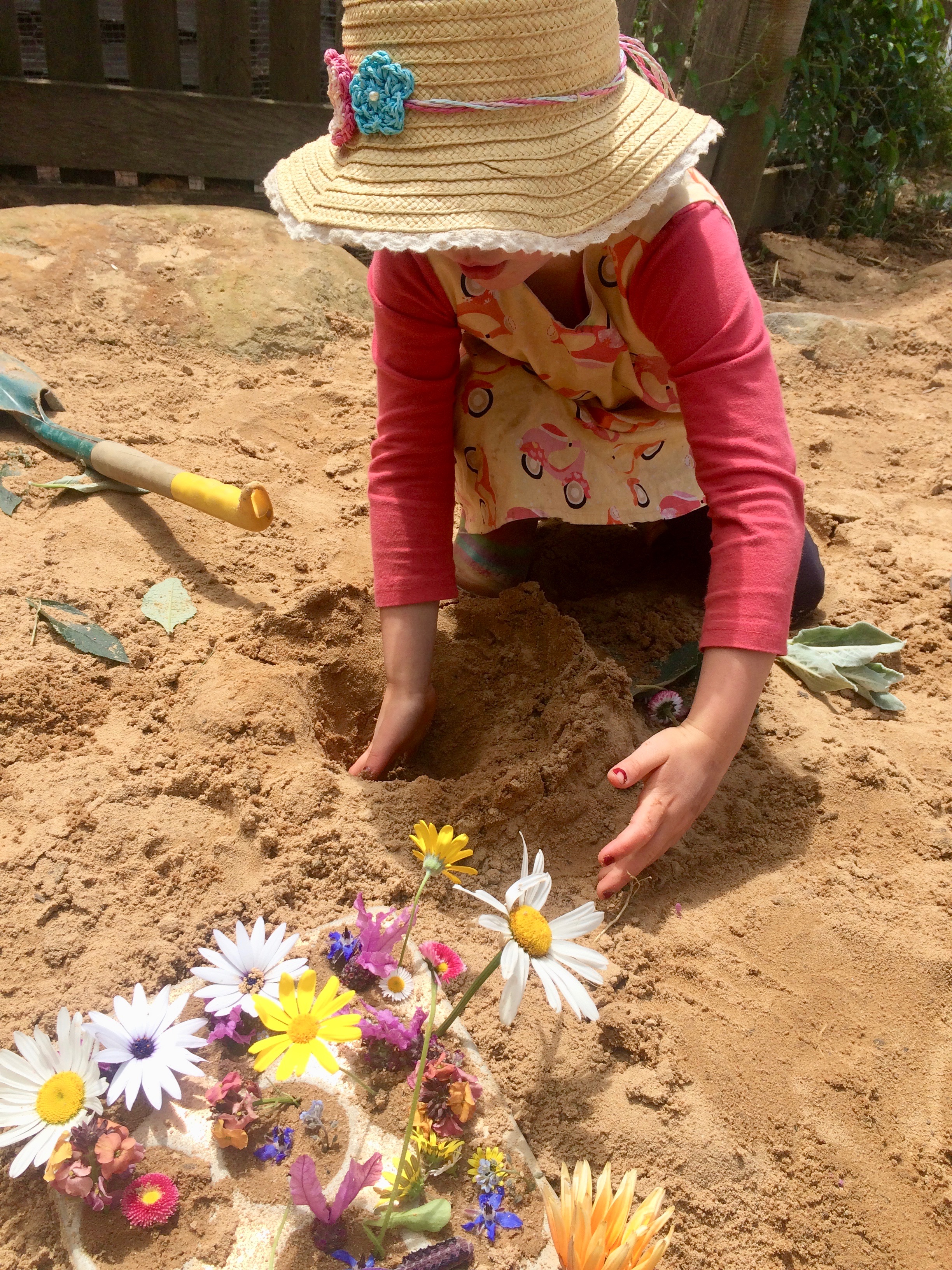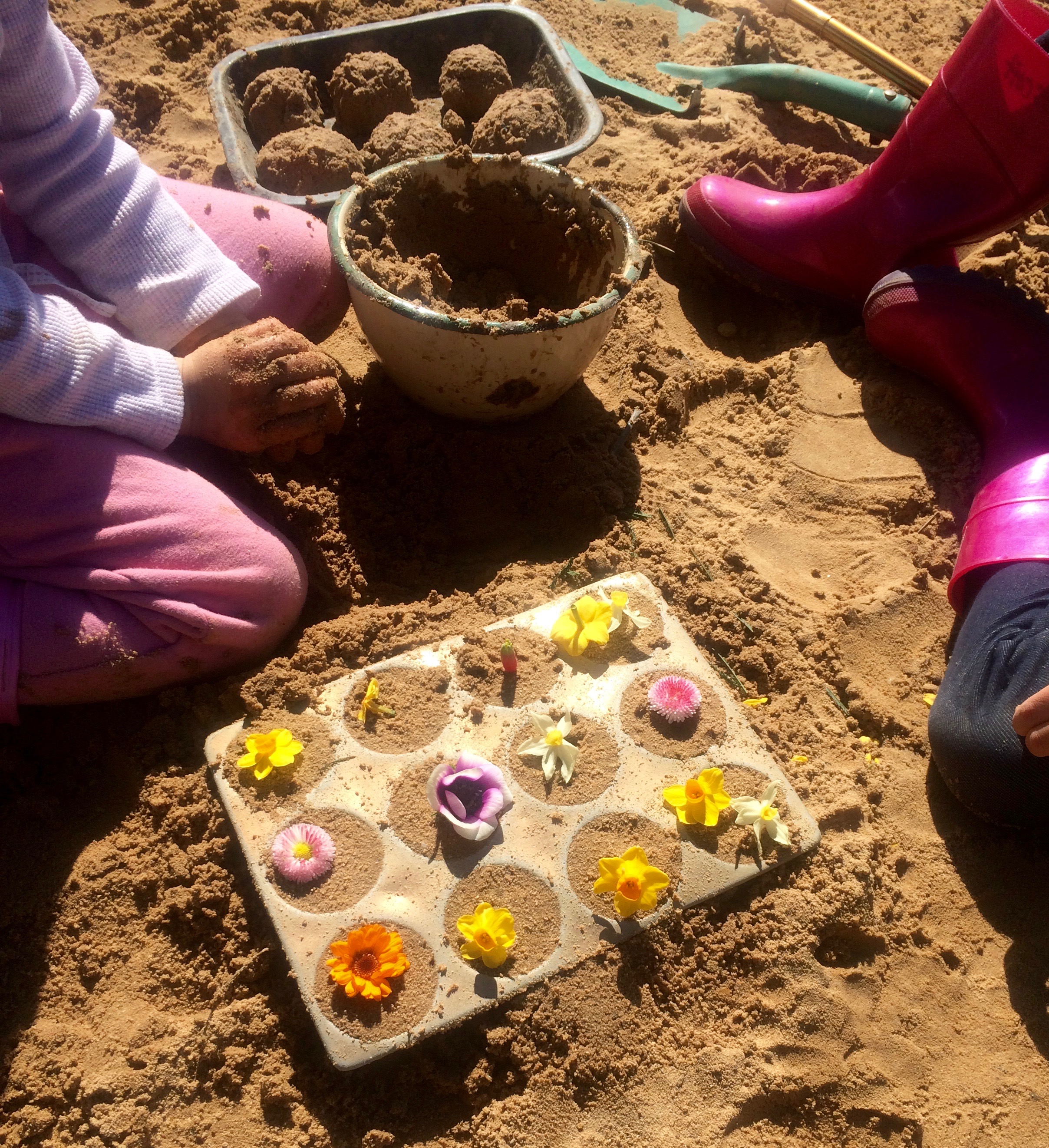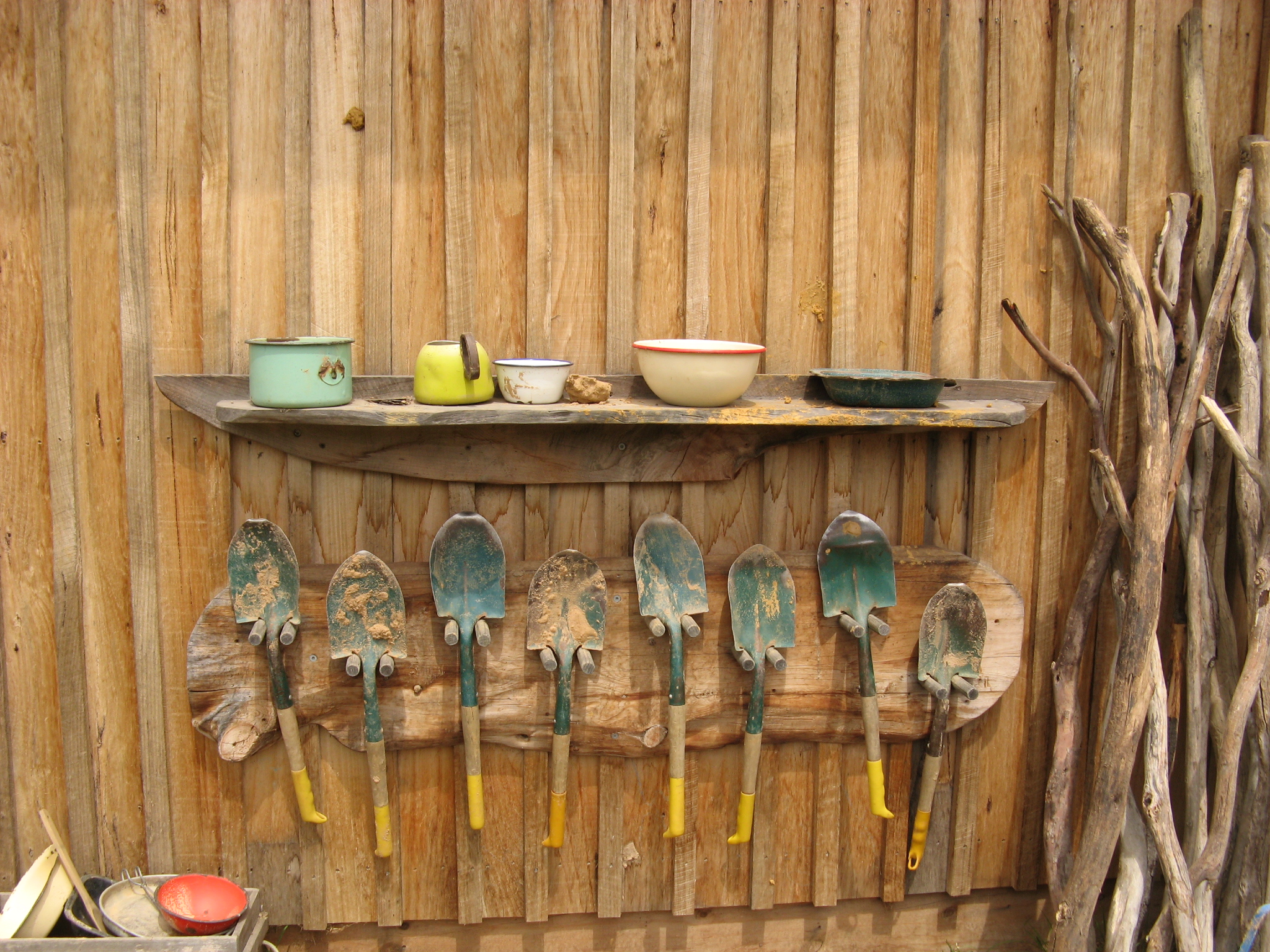School in an orchard
One bush kindergarten uses its garden to stimulate the creativity, curiosity and problem-solving skills of 22 little people. Design helped pull it together and relate to its bushland context.
A HALF acre of children’s playground with plenty of flower beds, fruit trees, a sandpit, swing, Birch grove and a series of tunnels created by a shrub planting is literally paradise if you’re knee-high.
Children strip the flowers to decorate sand pies and mandalas, harvest the fruit trees, pick the strawberries and raspberries as they ripen, and peel back the bark of the tree stump edges to reveal tiny indigenous frogs and lizards (see image below).
THE SITE
Downslope from a large mountain, the school garden receives stormwater runoff on its way to the creek below. In Winter, stormwater and rain – compounded by 22 pairs of little feet – turn the grassy area into a muddy quagmire while over Summer the shrink-swell clay soil dries and cracks into hard fissured plates. While the heavy clay soil is extremely fertile with the right plantings, the garden receives infrequent hand watering – especially over school holidays – and plants need to be robust enough to survive on rainfall alone.
THE BRIEF
To an adult eye, the disparate plantings are the reality of a bush kindergarten that survives on voluntary labour, scarce financial resources and the contribution of parents. The garden needed a sense of cohesion without tampering with the function of the space: to provide plentiful colourful flowers of all kinds as well as harvest, a loose sense of structure and purpose while fostering the dreamy qualities of imagination.
Beyond the fenceline, a natural spring-fed creek surrounded by native revegetation offered a different kind of flora, which felt disconnected from the kindergarten. The trick was to integrate the two different worlds of vegetation in a way that provided a relationship between the domesticated orchard garden and its bushland surroundings.
The garden’s grassy lawn area also needed to be green all year rather than turning into a muddy quagmire each Winter while stormwater runoff from upslope had to be directed offsite.
Early childhood educator Jane Evans said: ‘’Our kindergarten is a half acre where 22 children play every day. We have a small orchard in a flower garden surrounded by bush with a spring-fed dam where children have a safe space to explore and to play, and to help adults in meaningful tasks. The children need an abundance to pick and make potions, mandalas, sand pies, they need places to work together cooperatively and places to retire to in privacy and quiet. They want physical challenges and opportunities to assess risk within safe boundaries.”
“A garden designed with children in mind allows them uninterrupted time and space to immerse themselves through the senses in nature.”
THE DESIGN
Gardens of Delight collaborated closely with the kindergarten teacher to provide a sense of cohesion to the garden, which involved creating a series of botanical frames of different scales to delineate spaces and provide bridges connecting areas that became progressively larger – moving from the domestic teaching space, out into the garden and onto the bushland space beyond.
Virginia Creeper (Parthenocissus quinquefolia) was suggested for the deep wraparound verandah to frame the space with long slender streamers that turned vibrant orange and red in Autumn, creating a loose leafy sense of enclosure while allowing views onto the garden and bushland beyond. The streamers created a magical and tactile sense of entrance to the garden.
Another frame – a unifying border of Maidenhair Creeper (Muehlenbeckia complexa) – would completely hide the cyclone wire fencing around the perimeter and visually screen the classroom next door while creating cohesion for the disparate plantings in the garden with its riot of blossom and colour. These plantings were lightly tied together with textural foliage contrast interspersed with grey plantings and a repetition of Lavender and Salvia varieties.
Within the garden children could explore a variety of open and enclosed spaces where they could retreat to be alone, created by an existing Birch glade and a thicket of tall shrubs that formed a series of caves and tunnels.
Beyond the garden fence lay a nearby creek surrounded by native revegetation. Designing an irregular frame of native River Red Gums (Eucalyptus camaldulensis) allowed large-scale natural sculptural forms to loosely embrace the bush kindergarten and form a bridge between the domestic scale of the garden and the taller bushland beyond. The loose permeable frame of majestic trees will not only inspire awe and wonder in the years to come, but provide glorious silhouettes, especially during late afternoon and twilight.
“The loose permeable frame of majestic trees will not only inspire awe and wonder in the years to come, but provide glorious silhouettes.”
A suggestion that has not yet been implemented was allocating scarce kindergarten funds to redoing the lawn with Buffalo Grass and using volunteer days to install a long dry creek bed filled with large local rocks and native rushes such as the native Knobby Club-Rush (Ficinia nodosa) to direct runoff from upslope offsite into the creek below.
Ms Evans said: “A garden designed with children in mind allows them uninterrupted time and space to immerse themselves through the senses in nature, playing with the open-ended materials it provides.
“When they are able to directly experience the seasonal cycle and have an opportunity, no matter how small, to plant, tend and harvest their own food, children develop a deep connection to the natural world that stands them, and the environment, in good stead for the rest of their lives.
“Kindergarten literally means ‘children’s garden’. There is beauty in flowers and in form; harvest from the fruit trees, strawberries and herbs; habitat for insects, native birds and animals; and space to dig, play with water, climb, run or rest.
“The garden needs enough structure to hold them and suggest purpose, while being loose enough to foster the dreamy qualities of imagination.
”Gardens of Delight helped us to balance all these things and created a meaningful and sustainable relationship between the garden and its natural surrounds.”
“When they are able to directly experience the seasonal cycle and plant, tend and harvest their own food, children develop a deep connection to the natural world.”






